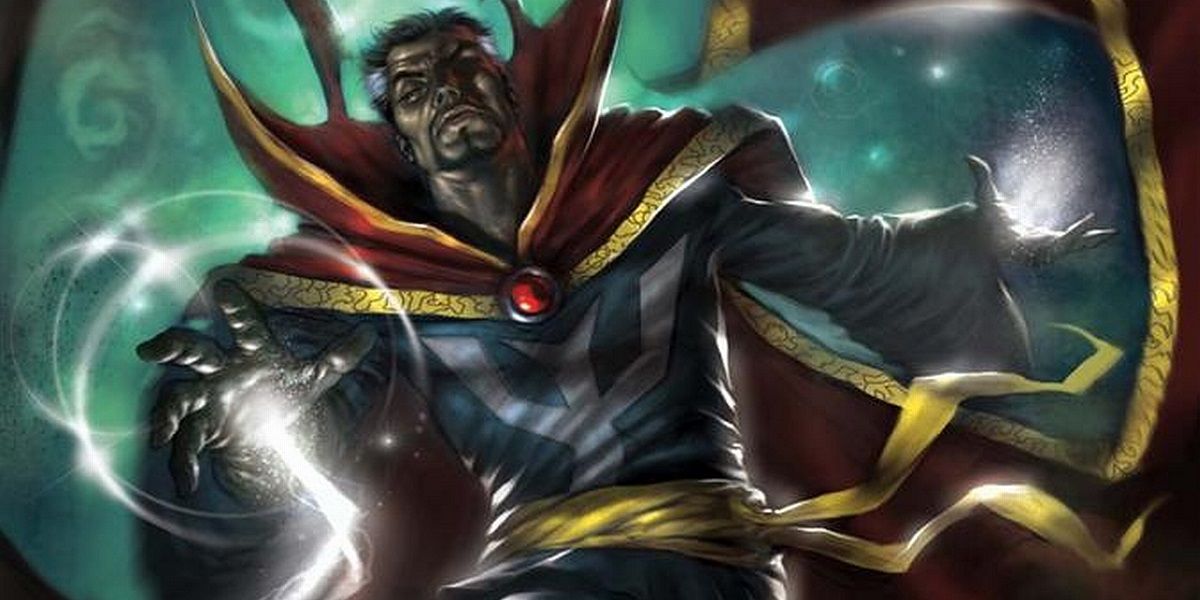New details regarding Guillermo del Toro's rejected Doctor Strange pitch have been revealed by his almost-collaborator Neil Gaiman. Thanks to 2016's Doctor Strange, its 2022 sequel Doctor Strange in the Multiverse of Madness, and his appearance in other MCU films, the character of Doctor Stephen Strange is now more popular than ever. However, in the early days of the MCU, the character was one of the lesser-known Marvel properties; in fact, he was one of the 10 properties Marvel Studios put up as collateral to secure their original $525 million loan to produce their films.
SCREENRANT VIDEO OF THE DAY
Attempts at a Doctor Strange movie had been considered for years at various studios, including Full Moon Entertainment, Dimension Films, and Miramax before Marvel Studios gained the rights back in 2005. While Hellboy 2: The Golden Army was filming, The Sandman creator Gaiman visited the set, and both he and del Toro talked about the possibility of making a Doctor Strange movie. As part of the MCU's Phase 3, Doctor Strange would later be directed by Scott Derrickson and star Benedict Cumberbatch.
In an appearance on the Happy, Sad, Confused podcast with Josh Horowitz (via The Direct), Gaiman sheds some further details on the discussion process. Gaiman says he and del Toro had discussions about Doctor Strange before Gaiman ran some ideas by Kevin Feige back in 2007, a year before Iron Man and The Incredible Hulk would kick-start the MCU. However, it wasn't in the cards for one major reason. Read what Gaiman has to say about the project below:
"Kevin and I have spoken a few times over the years on things. The only one that I wish, although, odds are probably, I think the way they did it commercially was better than…but I remember back in 2007, having minimalistic conversations with Kevin Feige about ‘What about Doctor Strange?’ Then talking to Guillermo Del Toro, and Guillermo and I having these ideas about Doctor Strange and starting the beginning, me starting the beginning of the conversation with Kevin about ‘I could do Doctor Strange with Guillermo.’ And basically, they said ‘We just want to concentrate on the core characters right now. Doctor Strange is way up the line, we don’t want to go there.’ There were some cool things in it. My favorite Doctor Strange thing was the idea of…the one thing that we really wanted to do was have his adventures, have him become an alcoholic and a disbarred physician, all that sort of stuff, happen in the 1920s. So the idea is that, he went though all of that and the training to become the world’s greatest magician maybe in the early ’30s, late ’20s, and he’s been living in Greenwich Village for 90 years looking the same in his place, and nobody really notices. We just sort of liked that idea, and he would have been sort of out of time. But other than that, it would have just been very sort of Steve Ditko, because, you know, that’s the best.”

Marvel Studios opted to put the focus on characters like Captain America and Thor, with Doctor Strange not properly entering development until 2010 when the first screenwriters were hired. Del Toro, meanwhile, would collaborate with Marvel Studios, attempting to develop a Hulk television series. Unfortunately, the project never made it past development. Meanwhile, Gaiman pitched the studio on an adaptation of his comic Marvel 1602, and while a live-action version never materialized, the comic will inspire an upcoming season 2 episode of the Disney+ animated series What If…?.
What's fascinating about del Toro and Gaiman's pitch of Doctor Strange being from the 1920s or 1930s is that it is very similar to Edgar Wright's idea for Ant-Man to have Hank Pym be a superhero in the 1960s, and also Peyton Reed's original Fantastic Four pitch at Fox, which was a 1960s set period piece. While Fox's later X-Men films would be period piece movies, the MCU has only done two: the World War II-set Captain America: The First Avenger and the 1990-set Captain Marvel. Digging more into the MCU's fictional history is always a tantalizing idea, and that makes del Toro and Gaiman's idea feel like a real missed opportunity. The prospect of how different the MCU would look if Marvel Studios had gone with a 1920s period piece Doctor Strange movie is enough to make even the Watcher ponder what might have been.
